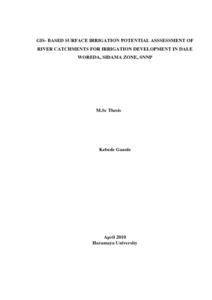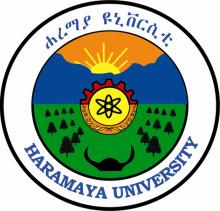Resource information
Assessing available land and water resources for irrigation is important for planning their use. This study was initiated with the objective of assessing the water and land resources potential of river catchments in Dale Woreda of Sidama Zone for irrigation development and generating geo-referenced map of these resources by using Geographic Information System. Watershed delineation, identification of potential irrigable land, and estimation of irrigation water requirement and surface water resources of river catchments were the steps followed to assess this irrigation potential. Results of the watershed delineation lead to gave two main watersheds (Bilate and Gidawo) and four sub-watersheds on Gidawo (Dama, Raro, Wamole and Woyima). To identify potential irrigable land, irrigation suitability factors such as soil type, slope, land cover/use, and distance from water supply (sources) were taken into account. The irrigation suitability analysis of these factors indicate that 86 % of soil and 58 .5 % slope in the study area are in the range of highly suitable to marginally suitable for surface irrigation system. In terms of land cover/use, 87.1% of land cover/use are highly suitable where as 12.9% were restricted from irrigation development. Overall, the weighted overlay analysis of these factors gave potential irrigable land among river catchments as Bilate (3,621.6 ha), Dama (552.7 ha), Gidawo (7,265.6 ha), Raro (693.35 ha), Wamole (1,511.3 ha)and Woyima (805.66 ha). To grow on these identified irrigable areas, two crops such as banana and sugarcane were selected and their gross irrigation demand calculated by using nearby climatic stations. The result revealed that irrigation requirements of identified command area varies according to nearby climatic station and type of crops selected. The discharges at un-gauged sites were estimated from gauged sites by applying runoff coefficient method and results were obtained on monthly bases. By comparing gross irrigation demand of irrigable land with available flow in rivers, total surface irrigation potential of the study area was obtained as 14089.55 ha. In conclusion, irrigation potential from this figure can be increased by using sprinkler and drip irrigation methods.



